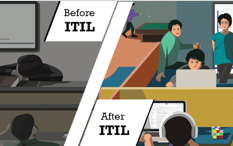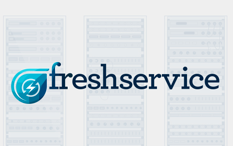Overview of ITIL processes
Let us discuss some of the core ITIL processes that are commonly used across service desk ticketing systems and their benefits.
Incident Management
Service desk ticketing system is the single point of contact for end users to report any issue that affects their normal routine. Incident management aims for speedy recovery from any kind of service disruption. Incident management enables IT teams to resolve incidents quickly by configuring multiple channels and setting up automations to remove manual work. Incident management process flow includes incident logging, classification, prioritization, investigation, diagnosis, resolution and closure.
Problem Management
The Problem Management team is responsible to perform a Root Cause Analysis (RCA) and to find a permanent fix/workaround for recurring incidents. It is recommended to have an effective communication strategy and to follow a proactive approach to avoid any major incident occurrence. Problem is one or more incidents with an unknown root cause. Problem management maintains a known error database, KEDB whose solution is unknown.
Change Management
Change management is responsible for evaluation and planning of a change with minimum risk and impact to the current ecosystem. Change management process starts with change evaluation, planning and getting necessary approvals from Change Advisory Board, CAB. It works closely with other ITIL modules such as Incident, configuration management to manage infrastructure and CIs that are affected or going through the change.
Release Management
Once change management is completed, it is followed by a release management process that has a specific deployment schedule. Change execution happens with the help of release management process. Release planning includes detailed build and test plan. You need to ensure that the change is tested well and this is followed by a post deployment review as a part of Continual Service Improvement, CSI.
Asset Management
Companies handle different types of assets that include IT and non IT assets. Asset management tracks asset configuration, asset state and asset owner. This improves governance and helps during asset audit. Asset lifecycle management ensures assets are tracked from stock till disposal stage along with cost incurred at each stage. Asset ROI analysis and contract renewal become more efficient with asset management.
Service Request management
Companies fulfill different types of service requests such as onboarding, reimbursement, new hardware or software request etc. Automatic approval management for service requests eliminates manual intervention and improves time taken to resolve. Service catalog is a family of service items which delivers a shopping cart like experience for end users.






